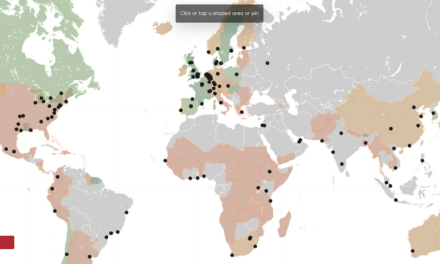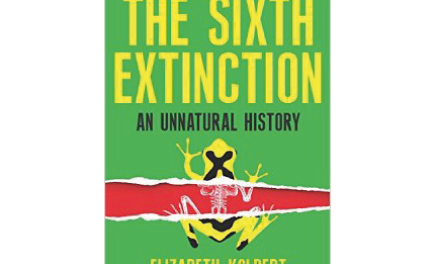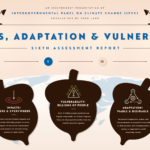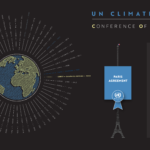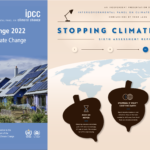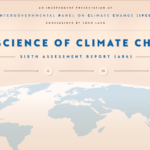There’s a Mole on My Bum (Stratospheric Ozone Depletion)
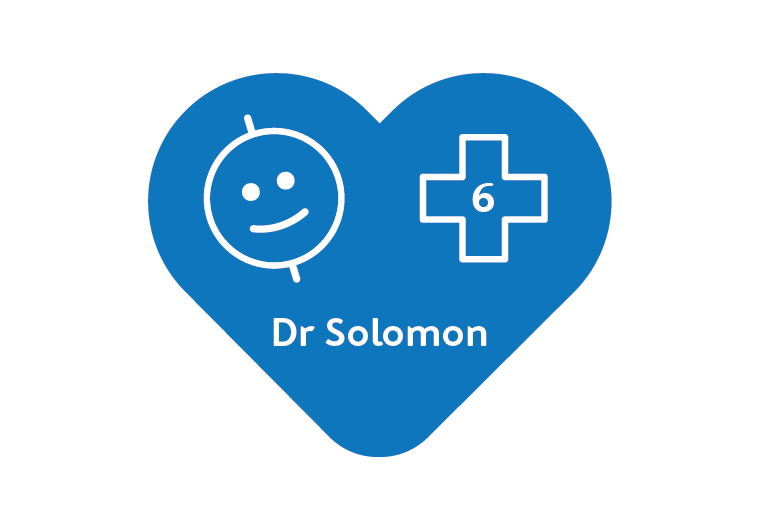
Bluey’s been feeling blue. On the advice of the doctor, he’s taken it upon himself to visit nine specialists—all experts in their respective ‘planetary-boundaries’. Bluey wants to find out exactly what’s going on.

For more context generally and a description of why we’re doing this series, check out ‘My Climate Change Metaphors‘.
____
Bluey here,
Don’t they say you should save the best news for last, not fourth to last?
Today’s appointment was with Dr Solomon et al and Nurse Fahey-Hegglin, and damn, what a breath of fresh air. It instantly got me musing: who on this Earth would sign up to be a climate or biodiversity specialist when you could be an ozone professor? If I was human and valued my sanity, I know where I’d gravitate.
The pain on my arse
So I spotted this disturbing looking mole on my left bum cheek while experimenting with bedroom mirrors a few months back. Ominous as it had looked to GP Steffen at our now distant first appointment, my keen eye was convinced it’d decreased in size since. I knew that still didn’t put me in the clear though. As the “ABCDE” (Asymmetry, Border that’s irregular, Colour’s uneven, Diameter, Evolving) rule lays bare to all of us on Earth, an evolving mole is always worth a check up.

The Mole on my behind, from behind (Source: Venus)
The SOL
According to Nurse Fahey-Hegglin, my skin’s stratospheric ozone layer (SOL) plays the all-important protector role. You’ll know some of the health benefits already — but they’re worth repeating. The SOL acts as an invisible force field, not just for me but also my terrestrial and marine organisms that roam around my surface. Most obviously, the SOL protects my body and its inhabitants from the Sun’s most harmful ultraviolet radiation — UV-B in particular, but UV-A as well.
Anyhow, if I recall what the nurse said, about 30 years back, a bunch of human scientists unearthed the mole. This was news to me, but the nurse charged on: “She was a big, girthy one. We called her Moley”. You see, “Ozone had begun to deplete globally”, and meanwhile, “a hole had begun to form over [my] Antartic region in the Austral Spring”. ‘Antarctic’ was the fancy word they used for my left bum cheek, ‘Arctic’ for my right.
As you’d suspect, there’d been widespread consternation among the humans following the discovery — yet no one had ever thought to alert me. This was done “for my protection” according to Nurse Fahey-Hegglin. As it turns out though, and as unlikely as this sounds, some industrious sapiens (Mario J. Molina and F. Sherwood Rowland) were busy uncovering what was actually causing the depletion. And soon enough — while I remained blissfully unaware — they discovered that a proliferation of human-manufactured chemicals were “the deadly culprits”. Surprise surprise, I thought, as I took it all in.
They called them ozone-depleting substances or ODSs for short. Most of these ODSs had been invented to help humans — for things like making better refrigerators and sweeter-smelling aerosol sprays — but they turned out to do exactly the opposite.
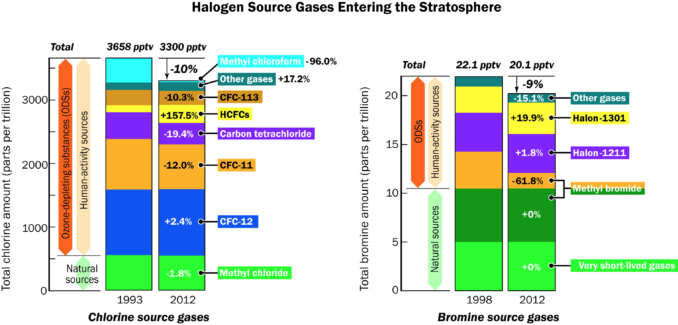
My “quite complex looking” Ozone Depleting Substances (Source: Ozone Assessment 2014)
The Examination
Assessing current global ozone levels, with a particular emphasis on the extent of my Antarctic ‘Ozone Hole’, turned out to be far from straightforward.
At her painfully slow discretion, Dr Solomon produced a variety of instruments to gauge “exact” ozone conditions. She made sure to utilise “both local and remote techniques”. Using a contemporary Dobson spectrophotometer and weirdly shaped balloons, she was able to collect local data from my left bum cheek and picked up remote trends using what she called a “Solar Backscatter Ultra-Violet satellite”. In hindsight, all quite impressive really.
As Dr Solomon collected her final pieces of data, Nurse Fahey-Hegglin swept in to explain concepts relating to how (and why) ozone is distributed unevenly across my surface. He also explained the fact that 90% of ozone predominates in my stratosphere (upper atmosphere), with just 10% residing in my troposphere (lower atmosphere).
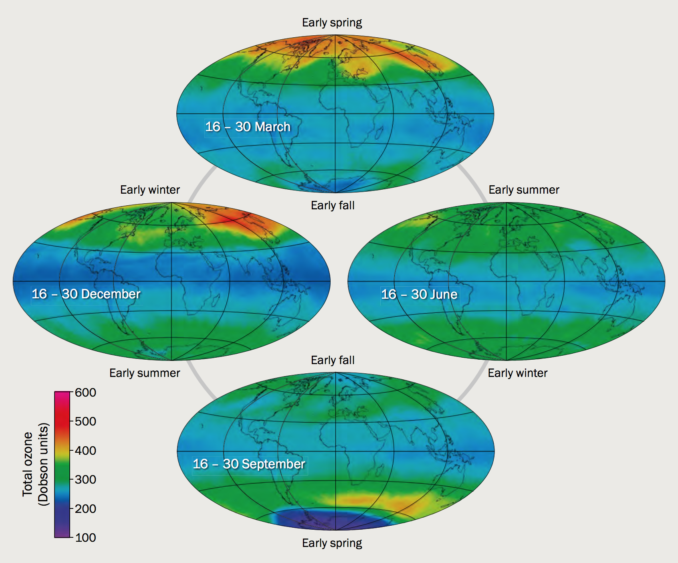
Annual distribution of total ozone (Source: Ozone Assessment 2014)
In addition, and just to confuse me, the Nurse broke down my ODSs into “manufactured halogen source gases” (e.g. chlorofluorocarbons or CFCs) and “halons” (e.g. Halon-1211). Why? In order to differentiate them from “natural halogen source gases” such as methyl chloride (CH3Cl).
Enough from me. Here are Dr Solomon and Nurse Fahey-Hegglin‘s full results:

Medical Report #6: Stratospheric Ozone Depletion
Perhaps the most impressive aspect of the entire appointment was Dr Solomon convincing me through data alone that my overall ozone levels had stabilised and my ozone hole was “closing slowly”. This trend was apparent in spite of large variability to do with seasonal fluctuations in temperature, transport dynamics and “volcanic aerosol chemistry”. By using a comprehensive range of data sets and comparing trends from 1980 – 2000 with 2000 – 2014, Dr Solomon showed a clear decreasing trend in the extent of my Ozone Hole.
It was riveting stuff, but you might’ve had to have been there!
What struck me most about ozone levels was their ability to fluctuate year on year depending on different variables. It wasn’t just temperature fluctuations. For example, the large ‘holes’ that were apparent in 2011 and 2015 were correctly attributed to my eruptions, respectively, of Puyehue-Cordón Caulle and Calbuco on my Chile. These occurred when I was particularly flatulent and desperately in need of a release. The size of the 2015 hole was estimated to have been a massive 4.4 million km2 larger because of the eruption of Calbuco!
Humans can work together, after all
The final fascinating fact I discovered today was the success of the human-created Montreal Protocol of 1987 that prescribed limits on ODSs. Due to the Kyoto Protocol’s abject failure in the climate regime, I thought that ‘top-down’ human agreements were always destined for failure. It was timely to learn that humans could actually come together to solve a big problem.
At current trends, the Montreal Protocol will have reduced ODSs to pre-1980 levels by as early as 2050. Now that’s some good news.
Yours for awhile,
Bluey


